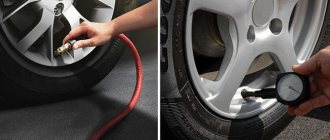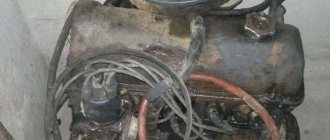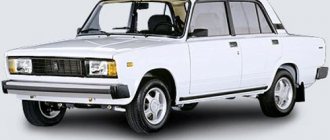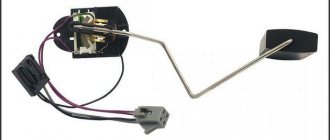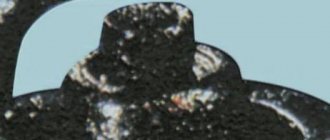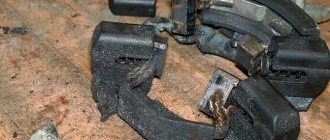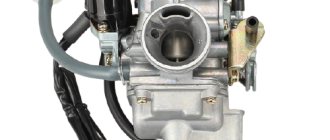The question of comparison in terms of “which is better” between injection and carburetor fuel supply has not been raised for a long time. There are fewer cars equipped with a carburetor every day, and new ones are no longer produced.
Novice motorists do not understand the structure of a car engine, fuel supply system, etc. The terms “carburetor” and “injector” mean nothing to them. Inexperienced motorists do not see the difference between their purposes. Those who buy a new car no longer face the question of which is better: a carburetor or an injector. They don’t need to know anything about the carburetor, since it has long been discontinued and does not pass the Euro-3 environmental standard.
This is associated with the massive transition of automakers to cars with an injection power system. The requirements for exhaust gas cleaning are becoming higher, and the carburetor cannot meet them.
But this is not the only reason for abandoning carburetors. Compared to an injector, it has many disadvantages and few advantages.
Pros and cons of the injector
First of all, the injector is different in that it is capable of providing much more engine power than the classic version. The injector is not a carburetor, so even in winter it starts without any problems - you don’t have to invent anything to make the car go. In terms of reliability, it is still at a fairly high level - the system rarely fails on its own, since it is completely isolated from the external environment.
But there are also disadvantages, and there is no escape from them. The first and most significant is the inability to independently diagnose and fix faults if they arise. The system includes a lot of complex elements:
- Fuel rail.
- Injectors.
- Electronic sensors and more.
Each of them is practically impossible to repair; in the event of a breakdown, the unit will have to be completely replaced - and unlike the classical system, the parts here are by no means cheap. A power system of this type requires extremely high-quality fuel. If you use a cheap one, then impurities, undissolved residues of petroleum products and residues from production will quickly clog the injectors and they will have to be cleaned. And this can only be done at a special stand in a service station.
At the same time, if you constantly drive on low-quality fuel, then after a while cleaning the injectors will no longer help - they will completely fail. Since they are sold in sets, their price will be approximately a quarter of the entire engine. Accordingly, we can conclude that the use of engines with such a power system costs owners significantly more. This is the difference between a carburetor and an injector.
Types of injection injection
As soon as car manufacturers decided to move away from the carburetor injection system, the injection nozzle was installed alone, directly in place of the carburetor, and injection was carried out into the intake manifold. This method of fuel injection was called mono-injection and its usefulness did not greatly exceed the effect of a carburetor. The next stage of evolution was distributed injection, the injectors were installed closer to the cylinders, but also in the intake manifold. The pinnacle of injection injection was full-fledged direct injection into the engine cylinders through the intake valve. This ensures maximum engine efficiency, increased power and efficiency.
How does a carburetor work?
The carburetor is one of the most important mechanical parts of a car. All engines require the correct mixture of gasoline and air to burn gasoline. And it is this vital device that controls the ratio of the fuel-air mixture entering the engine. For effective output inside it, all components must work perfectly. The correct fuel to air ratio is critical to engine performance.
Air enters the device from the air intake or through the air filter, and is gradually accelerated due to the narrowing of the internal walls. This air blows perpendicular to the throttle valve, controlled by a cable. When tensioned, the cable lifts the throttle located inside the main body of the device. When the flapper rises, fast moving air pulls gasoline upward from the float chamber.
The quality of the mixture of air and fuel to power the engine depends on the speed of air entering through the device. And, although most modern car manufacturers have switched to fuel injection, there are still many models equipped with outdated engines.
Strengths and weaknesses of the carburetor
This is a simple and inexpensive fuel supply system for two-stroke and four-stroke engines. The simplicity and mechanicalness of its maintenance and repair are possible and quite simple. It can be easily customized according to user needs and environmental conditions. Being a mechanical device, it reacts uniquely to every possible position and action of the fuel. Frequent response to speed is a very common feature and advantage of such a fuel supply system. The problem of fuel contamination can be ignored in a carburetor engine, although this reduces performance. A very suitable fuel supply system for low-cost and low-capacity automobile engines.
The amount of fuel supplied is not precise, as it allows the flow to be supplied according to the suction speed and the amount of air in the combustion chamber. Fuel economy is significantly lower in a carbureted engine. With this fuel supply system, cold starting of the engine is a big problem. Dry and rich mixture often becomes a problem. Due to inefficient combustion, emissions are significantly higher. In some cases, the engine gets vibration, and the problem of dirty spark plugs is also quite common.
Carburetor design
Carburetor - is the simplest type of device for supplying and spraying gasoline. The process of mixing fuel with air is performed mechanically, and adjusting the supply of the mixture requires careful adjustment. Thanks to the use of simple mechanisms, the carburetor system is easy to maintain. An experienced motorist can perform such repairs independently, which provides certain advantages in operation. For such operations, it is not difficult to purchase a repair kit, and all work is carried out with standard tools available in the car.
The carburetor is located on the intake manifold, and its design consists of a float and mixing chambers. To supply fuel, a spray tube is used, connecting the chambers to each other. Fuel is supplied to the float chamber using a gasoline pump, and a stable supply of gasoline is ensured by a needle filter and a float. The mixing chamber is also called the air chamber and consists of a diffuser, atomizer and throttle valve. When the pistons move, a vacuum is created, which ensures the suction of atmospheric air and gasoline. This mixing ensures stable engine operation.
How does an injection engine work?
In addition to its simpler design, the injector differs from the carburetor in its operating principle. Here the main element is the nozzle - a sprayer with an electromagnetic drive that supplies the combustible mixture directly into the combustion chamber or into the intake manifold. The injectors are controlled by an electronic unit that collects readings from the following sensors:
- crankshaft position;
- mass air flow (abbreviated as MAF);
- lambda probe (read more about the sensor here);
- throttle position (TPV);
- speed;
- detonation.
Reference. Air flow meters are gradually being replaced by a new type of device - absolute pressure sensors (APS).
Gasoline and air are injected into the combustion chambers forcibly . The pressure in the fuel rail, where all the injectors are connected, is provided by an electric fuel pump. When the sprayers consume little fuel, the pressure in the fuel line is limited by a valve that dumps gasoline back into the tank.
We recommend: TSI engines from Volkswagen - what they are, their pros and cons
“Seeing” the position of the crankshaft, the controller selects the moment to turn on the injector when the piston in the cylinder moves down. The amount of mixture supplied depends on the duration of operation of the sprayer and is determined by the control unit using the throttle position sensors and mass air flow sensor. The remaining meters are needed to adjust the proportions of gasoline and air in the mixture.
Thanks to the lambda probe mounted in the exhaust pipe, the controller is aware of the quality of fuel combustion. Speed and detonation meters provide a more complete picture of the operation of the power unit. The engines of more modern cars are equipped with additional devices - camshaft sensors, which allow the electronic unit to monitor valve timing.
Work principles
An injector is a system that is regulated by an electronic control unit. It injects fuel into the combustion chamber through injectors. The injector allows you to precisely control the dose of gasoline, which is why it is used in most modern cars.
Carburetors have been used since the very beginning of automobile manufacturing. The fuel is mixed with air inside its housing, and then it is sucked under pressure into the intake manifold.
The carburetor does not have sensors that react to the number of revolutions. Because of this, equal doses of fuel constantly enter the combustion chamber. Gasoline consumption is uneven and you have to refuel frequently. And exhaust gases are quite toxic; they pollute the atmosphere.
The injector does not have such disadvantages, since it supplies gasoline into the chamber taking into account the speed. Thanks to this precision, the emission of harmful substances during fuel combustion is reduced.
Selecting the optimal fuel supply system
In debates about which is better - an injector or a carburetor, car enthusiasts always have differing opinions. Some people think that only the carburetor copes with the engine's operation, while others are convinced of the need to use an injector. So which of these options is the best?
It seems like an injector is the best option. Although most small engines use a carburetor system due to its simplicity and low prices, as well as lower maintenance costs, fuel injection is the ideal choice for modern vehicles to improve performance, reduce emissions and save fuel.
If power and performance are your main criteria when choosing an engine, you'll be firmly on the side of carburetors. This is due to the fact that a carburetor engine has no restrictions on the amount of fuel that can be pumped out of the tank. This means that modifications to the cam will allow more fuel to flow through the carburetor and into the cylinders. This results in a denser mixture in the chamber and higher power levels.
The only way to compete with a fuel injector is to turbocharge it to achieve the same fuel elasticity and performance. For normal daily driving, however, the extra power won't make much difference. Excess power will always lead to increased fuel consumption, which in turn will cause increased costs.
While the carburetor may have been around for over a century, the fuel injector is clearly superior in functionality and performance, delivering better power, fuel economy and lower emissions. For a modern driver, this is enough to make a choice. If you are a fan of the latest technology, then you will definitely prefer fuel injection instead of carburetor. Carburetors are old school, but that doesn't mean they're bad. Carburetors offer simplicity, whereas fuel injection is much more complex. If you're looking at a classic Mustang or vintage Chevy C10, chances are it will be equipped with a carburetor. It’s not for nothing that many old car enthusiasts would prefer to replace it with a proven carburetor instead of a new system.
Pros and cons of carburetor and injector
Electronic control of power and ignition systems allows for more precise tuning and consistency.
A gasoline injection engine certainly has a number of advantages over a carburetor engine. Electronic control of power and ignition systems allows for more precise tuning and consistency. Keeping mechanical moving parts to a minimum has improved engine reliability. The service life of an injection engine is generally longer than a carburetor engine and because the electronics, adjusting the fuel supply and timing of spark formation, selects the optimal operating mode, which eliminates detonation due to the presence. In addition, injection power systems continue to improve. Cars with turbocharged injection engines have been driving on the roads for several years now and this is not a new thing. Naturally, innovations require some “breaking in” in order to become more perfect, but there are still prospects for development. The disadvantage of the injector is that it requires more complex diagnostics, requiring special equipment, which often makes repairing the injector more expensive, and the cost of some components is quite high. Therefore, the cost of carburetor repair is usually lower. In order to safely go on a long journey, it is enough to have carburetor and fuel pump repair kits. The weak point of these units are the diaphragms, the replacement of which does not require special skills. Therefore, as a car for fishermen, hunters, as well as for military equipment, a car with a carburetor power system is still more reliable - ease of diagnosis and repair allows you to quickly put it “on wheels”.
Everyone knows that gasoline engines either have a fuel injector or are equipped with a carburetor. But if you ask the first car enthusiast you come across the question of how an injector differs from a carburetor, you are unlikely to get a clear answer. Many people only know that these units perform the same function - they form a combustible mixture to supply it to the engine. But how do these units differ?
Positive and negative sides of carburetors
The main advantages of a carburetor are hidden in the following factors for the motorist:
- maximum ease of maintenance;
- relatively low demands on fuel quality;
- You can clean the jets, disassemble the body and carry out diagnostics in a garage.
Vehicles equipped with this device are characterized by high throttle response of the power plant. Changing operating modes occurs quickly, without jerks. Experienced drivers say that such cars are easier to overcome steep descents and travel off-road.
The disadvantages are the following characteristics:
- noticeably higher fuel consumption;
- polluted exhausts;
- sensitivity to temperature changes.
Admirers of such cars are often experienced motorists or young drivers who prefer to repair their cars themselves.
How to distinguish an injection car from a carburetor
If you know what a carburetor looks like, then all you have to do is open the hood and look under it. But if you have no idea about it, then a number of signs will help you identify it:
- a new car sold at a car dealership is 100% fuel-injected;
- look at the nameplate at the rear of the car - for example, it says BMW 525i. This “i” is the designation of an injection car;
- year of car manufacture. Injectors began to be installed on foreign cars in the mid-90s, on domestic ones - from the beginning of the 2000s;
- The air filter housing is mounted directly on the carburetor. If you see air ducts (for example, black plastic corrugated boxes), then most likely you have an injection machine in front of you;
- If the indicators that light up on the dashboard when you turn the key contain a “Check Engine” indicator, then the car in front of you is fuel-injected.
Difference between power systems
So, both the carburetor and the injector perform the same function - they generate a fuel-air mixture, which is then supplied to the engine cylinders. But the way the mixture is created in these systems is fundamentally different. The difference is that in a classic engine, a ready-made mixture is supplied to the cylinders, which is drawn in under the action of vacuum. As air passes through the carburetor, it mixes with the fuel inside. The only negative here is that all actions occur completely mechanically.
The difference between an injector is that here every moment and step is controlled by a computer, many different sensors are used.
There are plenty of them here:
- Mass air flow sensor.
- Air temperatures.
- Positions of the camshaft and crankshaft.
- Throttle position, etc.
Based on sensor readings, the on-board computer decides when it is best to inject the fuel mixture and what its composition should be for optimal engine operation. This is precisely the difference between carburetor and injection power systems.
Operating principle of the injector
Injection supply of a combustible mixture is more modern and efficient in engine operation. The advantages and differences between an injector and a carburetor are that an electronic control unit is responsible for supplying gasoline to the cylinders, which doses the mixture depending on the type of load. The carburetor and the injector perform the same functions - they supply gasoline to the cylinders. The injection design works due to many sensors installed on the car.
The principle of operation of the injector: 1 - fuel tank; 2 - electric fuel pump; 3 - fuel filter; 4 — fuel pressure regulator; 5 - nozzle; 6 — electronic control unit; 7 — mass air flow sensor; 8 — throttle position sensor; 9 — coolant temperature sensor; 10 — XX regulator; 11 — crankshaft position sensor; 12 — oxygen sensor; 13 — neutralizer; 14 — knock sensor; 15 — adsorber purge valve; 16 - adsorber.
Injectors supply the combustible mixture directly to the cylinders; this type of engine equipment with gasoline is used in almost all modern power units. The check valve is responsible for maintaining the fuel level increased by the fuel pump into the fuel line. The design and difference of the nozzles consists of a solenoid valve, a spring, and a spray system.
Various types of gasoline supply are used in injection systems:
- Mono injection (single-point), the cheapest option, is installed on small-volume power units in order to save fuel;
- Distributed (multipoint) has several spray systems to more completely saturate the cylinders with the mixture;
- Direct or direct injection is installed on racing cars.
The amount of gasoline supplied to the cylinders depends on several parameters. Engine load, engine temperature, amount of nitrogen oxide in exhaust gases, air flow. The crankshaft position sensor acts as a reference for supplying fuel at the right time and cylinder. The position of the throttle valve determines the amount of combustible mixture supplied by the injection system; which is better, a carburetor or an injector.
Main differences between systems
The differences between a carburetor and an injector appear when determining their strengths and weaknesses. You can choose the best option by comparing their pros and cons, as well as functionality according to several parameters:
- Power and performance.
We recommend: Injection injection system
Electronically controlled injector provides more accurate results. Since it can provide the required amount, the engine runs at optimal power and provides the best performance.
A carburetor differs from an injector in that it cannot calculate the exact amount of fuel. They cannot be adjusted when atmospheric pressure or fuel temperature changes.
- Emissions and fuel economy.
Again, the injector wins in this regard. It can accurately calculate the required amount of fuel and air and adjust it according to changes in several parameters, resulting in lower consumption, higher fuel efficiency and lower carbon emissions. Carburetors cannot produce the same results because they provide an average fuel-to-air ratio that is independent of engine conditions.
Emissions are a major factor in modern automotive manufacturing and are likely to become even more important in the future. Here the injector has many advantages. The carburetor was fine when little attention was paid to the amount of CO2 emitted, but these days car emission restrictions mean that more and more manufacturers will lean towards fuel injection for their vehicles.
Injection engine intake system design
- Operating costs.
If you choose which is more economical - a carburetor or an injector, then the first one wins in this regard. You can even rebuild the entire system in the garage! All you need are a few simple hand tools, a carburetor cleaner, and some spare parts.
On the other hand, the injector is a complex system. If the system is burned out, you will need outside help to transport the car to a repair shop. In addition, repairing the fuel injector system requires professional skills.
- Simplicity.
The carburetor is very complex and must be adjusted correctly to operate effectively. On the contrary, installing the injector is extremely simple. The carburetor rests on a float and must regulate the amount of fuel flowing through the engine. With a carbureted engine, one cylinder will receive more fuel than the other. In a fuel injected engine, each cylinder receives the same amount of fuel. In this particular case, there is little that can be done to improve the carburetor design.
The difference between an injector and a carburetor is that in injectors, fuel passes through a line under pressure to the fuel injectors. The car's computer instructs each injector when it should open, at which point fuel enters the cylinders. As it passes through the cylinder, the fuel is atomized, resulting in more efficient combustion.
- Structural difference.
The design of a carburetor is completely different from an injector. The carburetor is an air intake through an air filter, after which there is an air valve, and after that the air passes through a pipe in which it is mixed with fuel. then comes the throttle valve, after which the air-fuel mixture passes into the engine. The injector structure consists of the following elements: o-ring, filter, electrical connector, electrical coil, magnet, spring, o-ring, valve and cap.
- Price
An engine with a carburetor costs about five times less than an engine with an injection, which provides very large savings. However, maintenance costs for a carbureted engine tend to be higher than for a fuel injected engine, so in the short run this can all be taken into account.
Prices for injectors versus carburetors can vary greatly. In particular, direct fuel injection is usually significantly more expensive than central or multipoint injection.
- Device category.
A carburetor is a purely mechanical device, where the fuel injector can be a purely mechanical or electrical device (most are now electrical).
- Diagnosis of the problem.
The fully electronic nature of the electric fuel injector allows problems to be identified by simply connecting the engine control unit to a diagnostic device or computer where, as with carburetors, maintenance and tuning require special expertise as it must be done manually.
Computer engine diagnostics
Advantages and disadvantages of systems
Advantages of carburetors:
- Carburetors are cheaper, simpler to operate, and easy to repair or replace.
- Carburetors allow you to customize them to suit your requirements.
- Because carburetors are not built into engines, they can be repaired or replaced without touching the engine.
Disadvantages of carburetors:
- Not the most efficient systems, outdated design.
- Most carburetors have a slight lag, resulting in relatively slow throttle response.
- Some components, such as the diaphragm, are relatively delicate and susceptible to damage.
Advantages of an injector over a carburetor:
- Optimized, reliable air-fuel mixture and atomization ensure cleaner, more efficient combustion.
- Throttle response is much quicker.
- Better fuel efficiency and slightly more power than carbureted systems.
- Usually do not require maintenance and do not fail.
Injector disadvantages:
- Significantly more expensive than carburetors.
- Cannot be repaired with simple tools and must be replaced, which is expensive.
- Cannot be configured unless you have the appropriate hardware and software, which is again expensive.
More information about power supply
This entire fuel complex is complex. You could even say that it is a technological “organism” that ensures the supply of gasoline where it is needed. And since the leading role is played by the ECU, whatever one may say, the computer reacts very quickly to any changes.
- There are two main types of fuel supply to the internal combustion engine:
- Central or mono injection (single point).
- Distributed injection (multipoint).
- Direct injection.
All this is under the control of one device - the ECU, which is responsible for the mixture formation process. If previously a carburetor was used for this, now everything happens in slightly different places. Now about all this in a little more detail.
Central injection
In another way, this design is referred to as single-point. This is a kind of alternative to the carburetor, and in this case we can say that another unit is now located in its place. This system began to be widely used in the United States from the beginning of the second half of the 20th century. How does single point injection work? Everything is simple here.
The whole design resembles a familiar carburetor, only now there is a nozzle instead. Its location is the intake manifold. That is, fuel is supplied to all cylinders using only one device. At the same time, both fuel and air are constantly supplied here, where they are mixed with each other, forming a working mixture. The proportions are set by the ECU, which decides how long to open the injectors.
There are many advantages here:
- simplicity of design;
- low cost;
- there are no significant changes after replacing the carburetor with a modern analogue.
However, in this case it is impossible to achieve the desired environmental standards, and therefore today such a system is no longer used anywhere. And such cars can no longer be found in America, Europe, and Asia.
And the most noticeable drawback is that when the sprayer fails, the car will not start under any pretext!
Distributed injection
This is a more advanced variation in terms of efficiency. In English the name is Multi Point Injection or MPI for short. Here the number of injectors is equal to the number of cylinders and each is placed in a separate intake manifold, where the fuel is actually mixed with air.
At the same time, there are several more subtypes of injection injection:
- Simultaneous - gasoline flows to all cylinders at once. In the 70-80s there was no need to worry about its cost - it used to be cheap. However, then no one cared about the state of the environment. This is not practical for the reason that when two pistons perform the compression stroke, the other pair at the same time removes the exhaust gases. And if you inject gasoline into all cylinders at once, then of the two it will simply be thrown into the muffler. As a result, increased gasoline costs, and a lot of harm from this.
- Pair-parallel is a more thoughtful solution: fuel is supplied when it is needed. That is, at the moment of compression.
- Phased is an even more advanced option, in which each of the nozzles lives its own life. Here the ECU gives a control signal to the injector just before the intake stroke. As a result, low gasoline consumption is ensured, and the environment does not suffer much.
As you might guess, a phased injector device is used in every modern car. Where is it located? Its localization is the area of the intake manifold near the engine block. That is, the mixture is formed in the manifold itself: the device sprays gasoline, and a dosed portion of air comes from the throttle valve.
A few advantages:
- The whole structure is also simple.
- Low development cost.
- The sprayers themselves are resistant to high temperatures and are simple to use.
- Not too demanding on fuel quality.
Higher fuel consumption and lower developed power are already a disadvantage of this type of injection. However, due to the simplicity of the design, its low cost, and unpretentiousness, such an injection is part of most modern units that are hidden under the hood of not only budget cars. Such installations are also installed on class D cars.
Direct injection
The Gasoline Direct Injection complex, or GDI in abbreviation, is a fuel injection that is carried out directly into the combustion chamber. At the same time, it operates in a phased manner - the ECU controls each injector separately. Where is the injection mechanism located? Here lies the main difference between distributed and direct injection. Each such nozzle is screwed into the engine block itself. That is, it communicates with the combustion chamber and comes into contact with the ignited working mixture.
The air flow also passes into the cylinders through the throttle assembly and valves. As a result, mixture formation occurs not in the intake manifold, but inside the combustion chamber. The result is low fuel consumption, which can be up to 10%. Greater power is also developed, and exhaust gases do not pose a threat to the environment.
However, the disadvantages here are significant:
- Complex device.
- Difficult service.
- Repairs are expensive.
- High demands are placed on fuel quality.
Yes, Gasoline Direct Injection type injection is, on the one hand, efficient and environmentally friendly, but on the other hand, it is expensive to maintain.
What is the difference between an injector and a carburetor?
During the operating cycle, a saturated air-fuel mixture is formed in the carburetor, which is necessary for the engine to operate. In this case, an equal amount of mixture enters the engine, regardless of how many revolutions the “heart” of the car is operating at at a particular moment. Due to this, the system consumes a large amount of fuel and, consequently, the environment is unnecessarily polluted by exhaust gases.
When using injection systems, a lean air-fuel mixture is supplied to the engine in a dosage calculated by the central control unit. Precise dosage can significantly reduce consumption, provide cost savings and reduce the amount of harmful emissions into the atmosphere.
We recommend: Cleaning the carburetor - choosing the fluid and washing it yourself
The use of an injector allows in modern projects to increase engine power by up to 10%! and modernize the dynamic properties of the machine. The injector is not affected by temperature changes, it does not freeze in the cold autumn-winter period and does not overheat in the summer heat. However, the injector is more “picky” about the quality of fuel than the carburetor.
Carburetor engine
At the same time, using low-quality fuel on the carburetor is also not recommended in order to avoid serious problems with the chassis. It can be unpretentious in maintenance, compared to an injector, but only on condition that the driver fills the car with exclusively high-quality fuel. In the harsh Russian realities, such systems are subject to frequent breakdowns as a result of the use of low-quality gasoline. The advantages in such a situation include the ability to carry out repairs yourself and the affordable cost of spare parts for the unit.
The injector, on the contrary, breaks down less often and is generally more reliable, but its repair is a complex procedure. It is not possible to carry out diagnostics without special service equipment, and replacing components may require serious investment.
We recommend: Symbols, icons, indicators and symbols of the car dashboard
Advantages of a carburetor
The carburetor fuel supply system has undergone decades of testing and has the right to count on the attention of drivers. Its main advantage is the ability to repair it in almost any unforeseen situation far from a service center. The advantages and differences of this technology are easy to see from the following indicators:
- Lower cost of the device and its operating costs;
- Lack of carbon deposits and relative undemanding requirements for fuel;
- Easy to repair and low cost of services;
- Using the engine to suck in fuel.
The carburetor is sensitive to temperature conditions. Extreme heat or freezing temperatures can make it difficult to start the engine. It is worth noting that the carburetor is considered an outdated technology and does not meet EURO 3 requirements.
The design and principle of operation of the carburetor
About the design and operation of the car Is it possible to change the engine. Engine replacement
Carburetor operation diagram
The fundamental differences between a carburetor and an injector lie in the method of supplying the combustible mixture to the combustion chambers and the design of the ignition system.
The figure shows the most simplified diagram of a carburetor. However, with its help it is quite possible to understand how the air-fuel mixture is supplied to the cylinders. Let us briefly describe how such a device works. The carburetor is mounted on the intake manifold (lower plane), and the air filter is installed on top (upper plane). Gasoline is supplied by the fuel pump through inlet 1. To maintain the required fuel level in the float chamber of the carburetor 11, the inlet is equipped with a needle valve 2. Upon reaching a certain level, the float rises and, through a small lever, presses on the valve, closing it. Fuel and air, under the influence of the vacuum created by the piston as it moves down (with the cylinder inlet valve open), rush through the intake manifold into the engine cylinder. To improve the mixing of fuel with air and to make the mixture more dense, the cross-section of the chamber in the lower part of the carburetor has the shape of a cone - this is the simplest diffuser. The supply of the fuel mixture is regulated by the throttle valve 7, the axis of which is connected (using rods or a cable) to the gas pedal, and the amount of air in the combustible mixture is regulated by the throttle sensor. The amount of gasoline coming from the float chamber is determined by the diameter of the fuel nozzle 9. To start a cold engine, a richer mixture is required, that is, the air/gasoline mixture ratio should have a lower value. To do this, an air damper 5 is installed in the upper part of the carburetor. When it is closed (with a small gap), the amount of air participating in the formation of the combustible mixture is significantly limited, and it becomes enriched, which makes it easier to start the engine. After the engine warms up, the air damper opens. Manipulation is carried out manually - with a special cable, the handle of which is installed in the car interior.
Solex carburetors
Solex carburetor operation diagram
A two-chamber carburetor has a number of parts that help supply the fuel mixture to the combustion chamber under various operating conditions.
- not only fuel (39 and 29), but also air jets (14 and 7);
- adjustable idle system;
- air damper control system. That is, the damper closes and opens manually, using a cable, but its position is adjusted by the diaphragm 3 of the trigger;
- accelerator pump - to enrich the mixture during acceleration by injecting an additional portion into the chambers. Its diaphragm 42 is driven by lever 42. Gasoline is supplied through channels to the sprayer 11.
However, a detailed description is now completely unnecessary. The purpose of the material is to show the differences between an injector and a carburetor. From what is said above, the following conclusions can be drawn:
- To supply the mixture, the vacuum created by the engine pistons is used; its composition is determined by the diameter of the nozzle holes.
- All actuators, including the fuel pump, are mechanically driven, with the exception of the forced idle solenoid valve 5.
Technological features in operation
The technological difference between a carburetor and an injector lies in the method of supplying fuel to the combustion chambers. In a carburetor system, fuel is delivered to the cylinders using the suction principle. The piston, moving on the intake stroke, creates a vacuum in the cylinder and draws the air-fuel mixture through the intake manifold from the carburetor. Carburetor adjustment is responsible for the quality of the mixture. The main drawback is that the quality of the fuel mixture is the same in all engine operating modes, with the exception of choke during warm-up mode.
In an injection system, fuel is injected under pressure either into the intake manifold or directly into the engine cylinders, forming an air-fuel mixture at the time of injection. The fuel is clearly dosed by an electronic control system depending on the mode and operating conditions of the power unit. Moreover, the control unit adjusts injection and ignition timing. Together, this results in increased power, increased torque and fuel savings. Simply put, the car becomes more responsive and faster with less fuel consumption.
You can feel the difference between carburete and injector on Niva cars very clearly. With almost identical performance indicators declared by the manufacturer, in practice the injection Niva is more playful and responsive. And if fuel consumption when driving on a flat road differs slightly (up to 0.5 liters), then when driving on mountain or dirt roads the gap increases significantly. But this car is an SUV.
Another undoubted advantage of an injection engine is the stability of its operation. System adjustment is rarely required. All its components have a long service life and are quite reliable.
However, the injector has its own disadvantages:
- higher cost of maintenance and components for repair;
- special equipment is required for diagnostics, repairs and equipment, which narrows the independent capabilities of the car enthusiast;
- more complex diagnostics;
- When driving frequently with a small amount of gasoline in the tank, the submersible fuel pump fails.
As factory equipped with an injector, VAZ cars are equipped with submersible electric fuel pumps in the tank.
Such pumps are cooled by gasoline, and when the tank is almost empty, they overheat and fail. The first sign of a pump malfunction is its louder operation (humming). To avoid overheating of the electric fuel pump, drivers have to constantly maintain a certain minimum level of fuel in the tank, thus reducing its operating volume. When installing injectors on a VAZ themselves, some craftsmen use an externally installed electric fuel pump. In practice, this option is no better than the previous one: it is more difficult to fill the system if you reach an empty tank. And if you pump gasoline with a “dry” electric pump, it will quickly become unusable.
Main differences between systems
The purpose of both systems is to saturate the cylinders with a combustible mixture. The system pre-determines and prepares the mixture for delivery to the engine; inefficient fuel distribution affects overall consumption and the environment. Which is better, a carburetor or an injector? The first is popular in remote areas from services, as they can be adjusted without specialized tools. What is the difference between an injector and a carburetor is found out by many car owners before purchasing a new or used iron friend.
